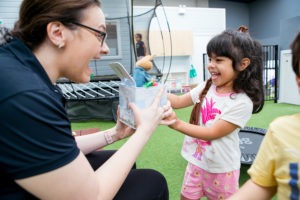Onomatopoeia is a very big word, but it’s meaning is quite simple. It is a word that evokes the sound of the thing it refers to or describes. Let’s get clarify more how Onomatopoeia help to Autism language development.
Some examples are ‘Boom’ ‘honk’ ‘beep’ and ‘woof’.
Research has shown that using onomatopoeia when speaking to young children can help develop their speech, because it’s engaging and they tend to respond better when these sounds are used.
People also tend to use a different tone of voice when using ‘sound’ words, and change their pitch as well, which is also much more engaging to a child than if an everyday tone and pitch is used.
So, to help your child with their speech development our tips are:
- Use onomatopoeic words to describe as much as possible in everyday life.
2. Repeat the sound word a few times, because children will learn more quickly through repetition.
3. Change your tone of voice and pitch to be as interesting as possible to your child.
Here are some examples of everyday moments you can use sound words:
Out in the park:
You see a dog you could say “Dog, Woof, Woof!”
You see a car you could say “Car, broom, broom” or “honk honk”.
If your child is coming down the slide you could see “weeeeeeee” with the pitch of your voice sliding down from higher to lower.
Firstly, Playing with a drum you could say “Boom, Boom, Boom”
Playing with an animal puzzle – point to lion and say “ Roar”, point to cat and say “Meow”, point to crocodile and say “snap, snap”
Playing make believe and making a phone call say “ring ring, ring ring, there’s someone on the phone for you”
Art and craft play:
Playing with playdough and poking the dough say “poke, poke, poke”
Painting, say “dot dot dot” when painting spots, or “whoosh” when painting long strokes
Onomatopoeia is a great way to engage your child and help them to develop language skills, and it can be fun for the adult too!


